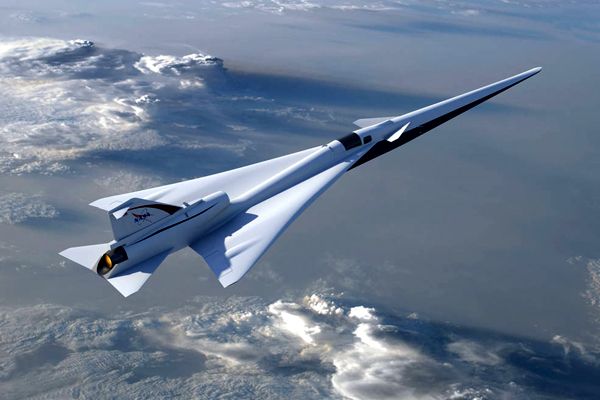
NASA
NASA’s Experimental Supersonic Aircraft Now Known as X-59 QueSST (News Release - June 27)
NASA’s newest experimental aircraft, designed with quiet supersonic technology and intended to help open a new era in faster-than-sound air travel over land, will forever be known in the history books as the X-59 QueSST.
The U.S. Air Force, which is the government entity responsible for assigning X-number designations and the popular name associated with the aircraft, officially informed NASA of their decision on June 26.
“For everyone working on this important project, this is great news and we’re thrilled with the designation,” said Jaiwon Shin, NASA’s associate administrator for aeronautics.
“I’m confident that the contributions the X-59 QueSST will make to our nation and the world will ensure its place among the greatest NASA X-planes ever flown,” Shin said.
The X-plane number designation continues a tradition of naming important experimental aircraft and rockets that dates back to 1947 and the X-1, the rocket-powered airplane that Chuck Yeager flew to become the first human to fly faster than the speed of sound.
And while that famous X-1 was nicknamed the Glamourous Glennis, for Yeager’s wife, today’s X-59 takes its QueSST nickname from the quiet supersonic technology the aircraft will be equipped with.
Now under construction by Lockheed Martin Aeronautics Company at its famed Skunk Works plant in Palmdale, Calif., the X-59 QueSST is designed so that when flying supersonic, people on the ground will hear nothing more than a sonic thump – if anything at all.
Once fully tested and pronounced safe to fly within the National Airspace, the X-59 in late 2022 will begin making supersonic flights over select communities to measure residents’ reactions to any noise they might hear.
The scientifically valid data gathered from these community overflights will be presented to U.S. and international regulators, who will use the information to help them come up with rules based on noise levels that enable new commercial markets for supersonic flight over land.
Source: NASA.Gov
****

NASA / Lockheed Martin

No comments:
Post a Comment